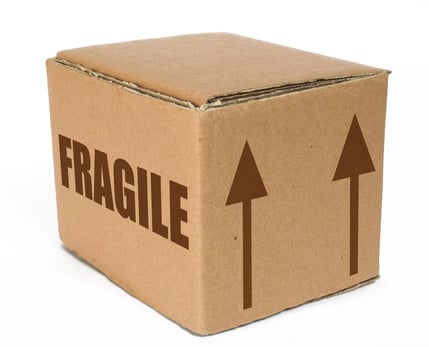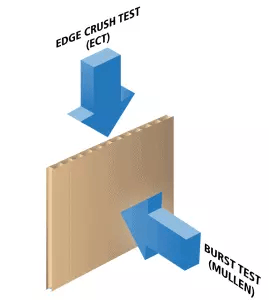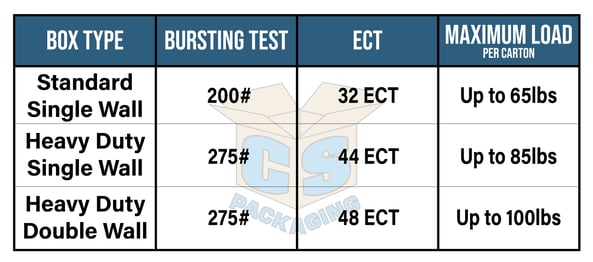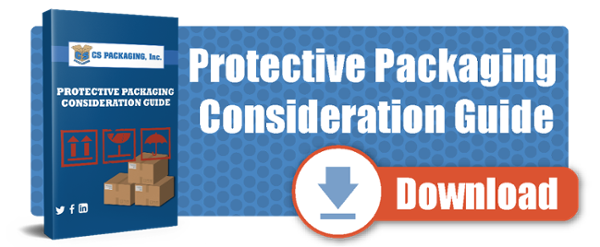
Very few products have impacted and revolutionized the packaging industry the way that corrugated material has. This simple, yet highly durable material is utilized in nearly every industry and market around the globe.
With the ever-growing popularity of corrugated shipping cartons, continuous improvements must be made to ensure the safety and stability of products in transit around the world.
The Edge Crush Test (ECT) provides testing methods for shipping boxes, particularly:
- Strength
- Security
- Overall effectiveness.
This allows the results to be scalable and easily reproduced in the future.
With the Edge Crush Test (ECT), manufacturers are now able to produce a more sustainable corrugated material that features increased strength ratings and decreased weight.
Edge Crush vs Mullen Tests for Corrugated Cartons
Until 1991, the only method available for measuring the strength of corrugated was the Mullen Test, (also known as the Bursting Test).

The Mullen Test, which is still used, is a good way to determine how well corrugated packaging can withstand rough handling and the results are noted in pounds.
For instance, a carton that can take 125 pounds of force before it ruptures has a rating of 125#.
The ECT uses another tactic. Instead of beating the box up, it exerts increasing pressure until the carton gives in. A piece of the corrugated material that makes up the box is placed on the edge. Then two plates, one on each side of the piece, press together, crushing the corrugated material between them.
The pressing process establishes a peak load that the material can handle, measured in pounds per lineal inch of load-bearing edge (lb./in.). This final value is stated as an ECT rating.
For example, a 125# Mullen Test would be generally equivalent to a 23 ECT.
What Changed in the 90’s?Recycling. Corrugated box makers began incorporating more recycled materials. While good for the environment, this change was not a benefit for Mullen Test ratings, which began to go down. The Reason? Recycled materials had shorter fibers that went in various directions. New paper had longer fibers that went in the same direction, thus providing more support. However, while the recycled materials provided lower results when it came to bursting, the results for vertical stacking strength and crush resistance were higher. Thus, the Edge Crush Test was introduced. |
ECT vs Mullen Test | Why Have Two Tests?
A common industry question: "If you can draw an equivalency between the Mullen Test and the ECT, why have two tests?"
Simply put, the Mullen Test gives a specific rating based on the weight of the materials used to make the box. The ECT offers an "equivalent" rating, depending on the nature, rather than the weight, of the materials that make up the corrugated product.
Box manufacturers have different methods for making corrugated cartons, and the formula used can affect how much bouncing about a box can withstand.
Therefore, if you suspect your carton will be tossed around like a suitcase in the hands of airport baggage handlers, it’s probably best to go with the rating established by the Mullen Test or opt for a higher ECT rating.
Under normal conditions, you might want to select the "equivalent" ECT-rated box.
If you think your box will have minimum movement or force applied to it, the standard box could give you the strength you need while using less material, reducing weight, and saving energy.
Edge Crush Test Chart
Below is a chart that breakdowns different types of corrugated material and their corresponding bursting test and ECT rating, along with the maximum load per carton.
The 32 ECT, 44 ECT, and 48 ECT are the most common box varieties, due to both cost and stacking strength considerations.

For those just entering the packaging market, the weight limits and ECT and Mullen ratings can get complicated.
Working with the packaging experts at CS Packaging can help make the process quick and easy to understand. From the edge crush test to the Mullen test, CS Packaging can help you save time and money you'll save by changing how you’ve thought about shipping supplies.
For more information on corrugated and other protective packaging materials, download our free Protective Packaging Consideration Guide below:
[Editors note: This piece was originally published in 2018 and was updated in March 2023 to reflect current and up-to-date information.]
.png?width=845&height=137&name=Slice%203%20(23).png)
